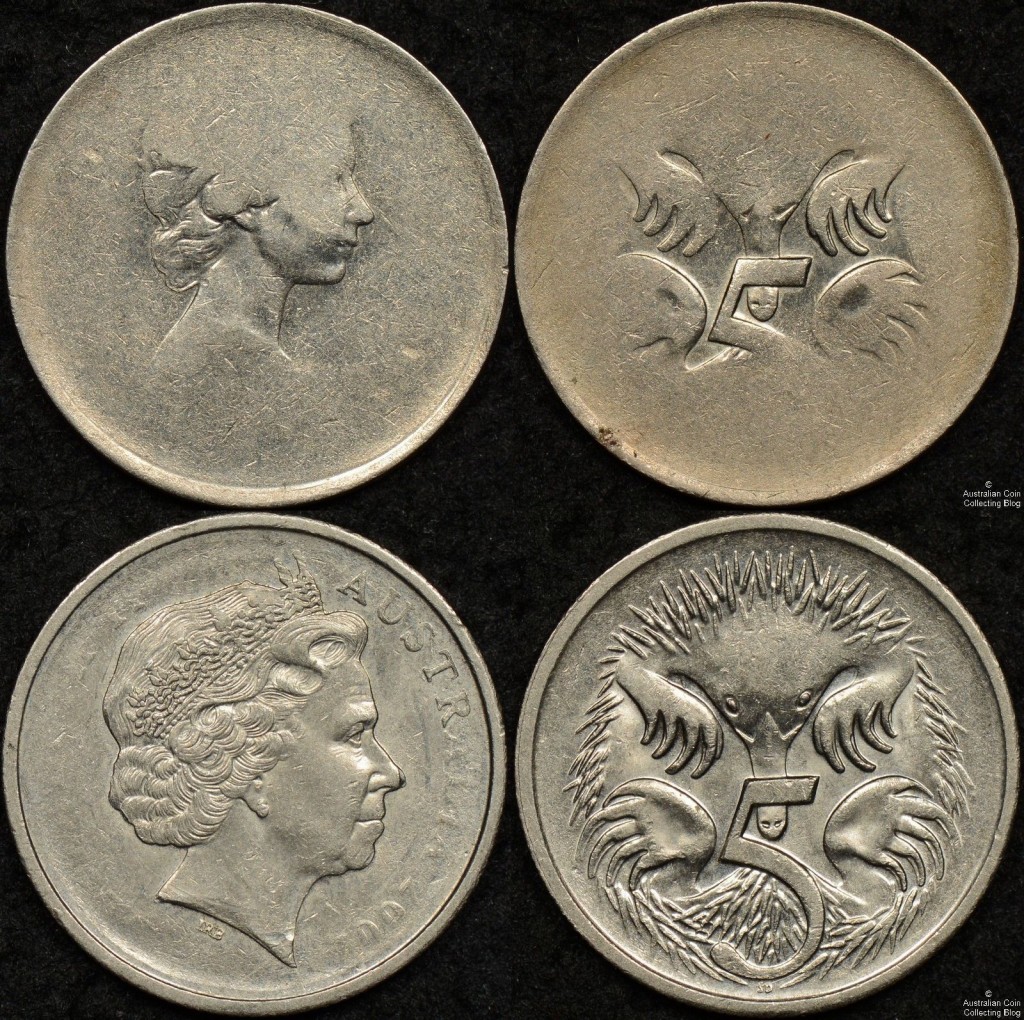We’ve written quite a few articles recently on coin errors and thought it would be worthwhile to collectors for us to merge two seemingly similar error types to identify and discuss their differences. This will help you recognise each error type and correctly annotate each in your collection.
Below we have two Australian 5 cent coin errors with design details missing. To determine the type of error coin we must look closely at the missing design and any patterns of missing details.
The MOST important thing to note here is you must look at BOTH sides of the coin to make an accurate assessment of the error type.
If you’ve seen our previous error coin articles then you are one step ahead! Let’s take a close look at each coin above. The top coin has a similar pattern of missing design on both faces of the coin. It’s uniformly weak and has no details towards the outer parts of the design but is perfectly struck right at the centre. The bottom coin is totally different on each side of the coin. The reverse is a normally struck coin, you wouldn’t look at it twice, but the obverse lacks detail in the legends less so through AUSTRALIA and more so on the left of the coin.
So what conclusions can we make here? The bottom coin was struck at optimal striking pressure as there is no fault on the reverse. The obverse lack of detail is due to something being on the planchet surface in an uneven distribution at the time the coin was struck. In this case it was most likely oil or grease from the maintenance process. The top coin was struck with lower pressure than usual because of the uniformity of the missing design. This low pressure affected the entire coin in the same way.
Have you correctly identified the error coins in your collection?
˙ןןıɟ ǝıp puɐ ǝʞıɹʇs ʞɐǝʍ sǝןɔıʇɹɐ snoıʌǝɹd ɹno uı ɹǝʍsuɐ
